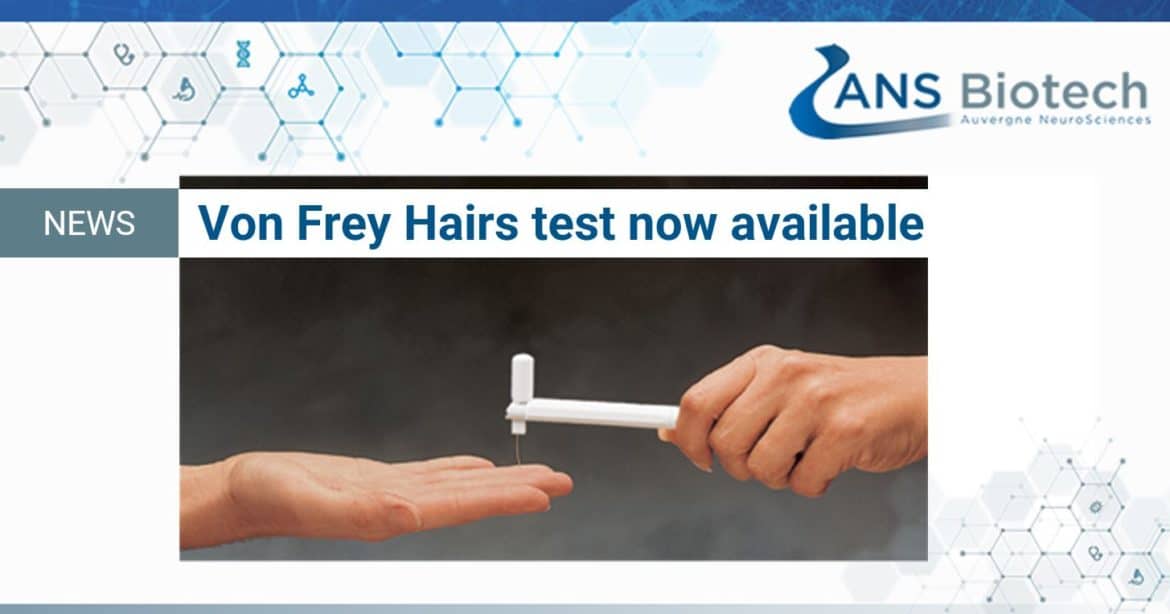
The most appropriate test for translational research
Von Frey hairs, initially designed by the German physiologist Max von Frey (1852–1932), are today considered as a standard for assessing tactile nociception both at clinical and preclinical levels.
Nowadays, the set is made up of twenty nylon monofilaments of various diameters that can induce a force ranging from 0.008g to 300g.
The Von Frey hairs test consists in perpendicularly applying onto the area to be stimulated various filaments of increasing diameters until bending, determining a positive response.
This non-invasive technique is widely used to evidence tactile allodynia (nociceptive reaction induced by a mechanical stimulation usually not painful).
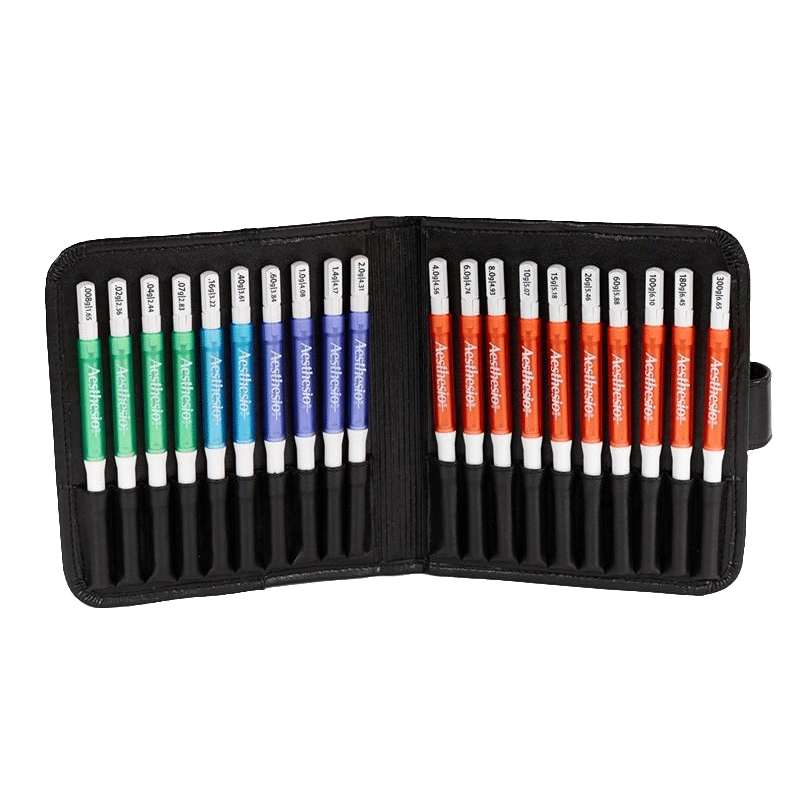
Chaplan: the frequently used non-invasive method
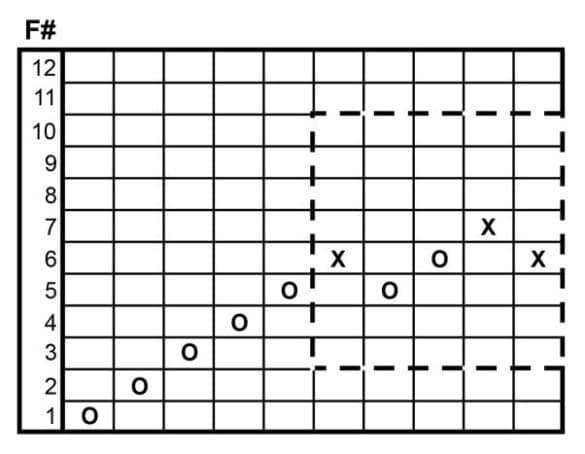
They are various methods for using these filaments to assess mechanical sensitivity.
The most frequently used is the “up-and-down” method described by Chaplan et al., in 1994.
This technique consists in applying consecutive hairs onto the plantar surface of the hindpaws. The “Up-and-Down” method is used to determined the 50% response threshold.
Tactile allodynia is evidenced by a lower paw withdrawal threshold of the injured paw versus the control paw.
Tactile allodynia in various pain areas
Neuropathic pain
ANS Biotech offers several mechanical nerve injury models that have proven their usefulness in the experimental study of NP in rodents.
Within these various models, the model of Chronic Constriction Injury (CCI) and the model of Spared Nerve Injury (SNI) are based on peripheral nerve injuries at different anatomical levels of the sciatic nerve and are related to post-traumatic/postsurgical neuropathic pain experienced by patients.
The CCI model is induced by unilateral loose ligation of the sciatic nerve.
The SNI model is a model of peripheral mononeuropathy based on the nerve injury of the tibial and the common peroneal nerves, sparing the sural nerve.
For both models, fourteen days after surgery, nociceptive thresholds are measured using the Von Frey hairs test (Chaplan method).
Assessment of the tactile allodynia induced in the CCI model in rats

Assessment of the tactile allodynia induced in the SNI model in rats
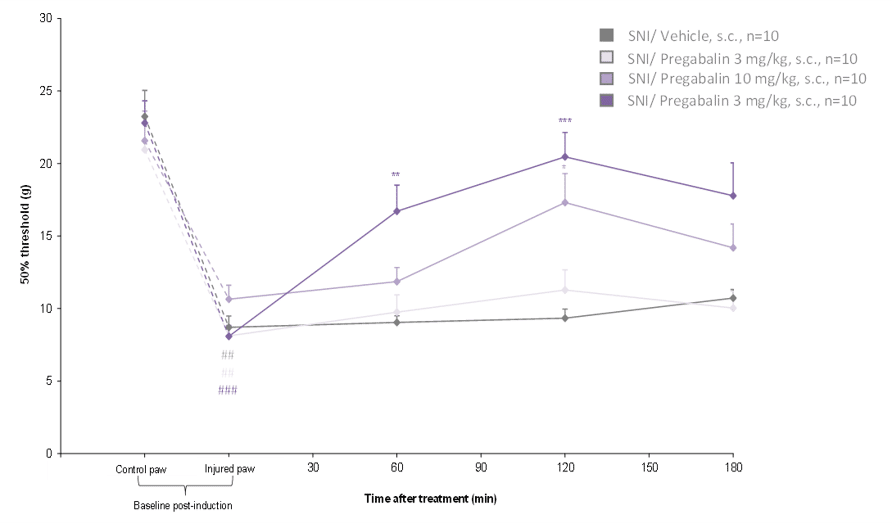
Both CCI and SNI models are classically used for revealing the potency of new analgesics in the field of peripheral neuropathic pain.
Postoperative pain
Mechanical hyperalgesia and/or tactile allodynia are observed by applying force directly on the surgical wounds of patients after inguinal herniorrhaphy, open cholecystectomy, and abdominal hysterectomy as examples. Several models of postoperative pain have been proposed to mimic surgical wounds.
In anesthetized rats, a 1-cm longitudinal incision is made through skin, fascia and muscle of the plantar aspect of the hindpaw. The incision produces a mechanical allodynia which is quantified using Von Frey hairs, In this test, consecutives applications of hairs are made on the plantar surface of the hindpaws of the rat. The “Up-and-Down” method is used to know the 50% response threshold of the rat.
Assessment of the tactile allodynia induced in the POP model in rats
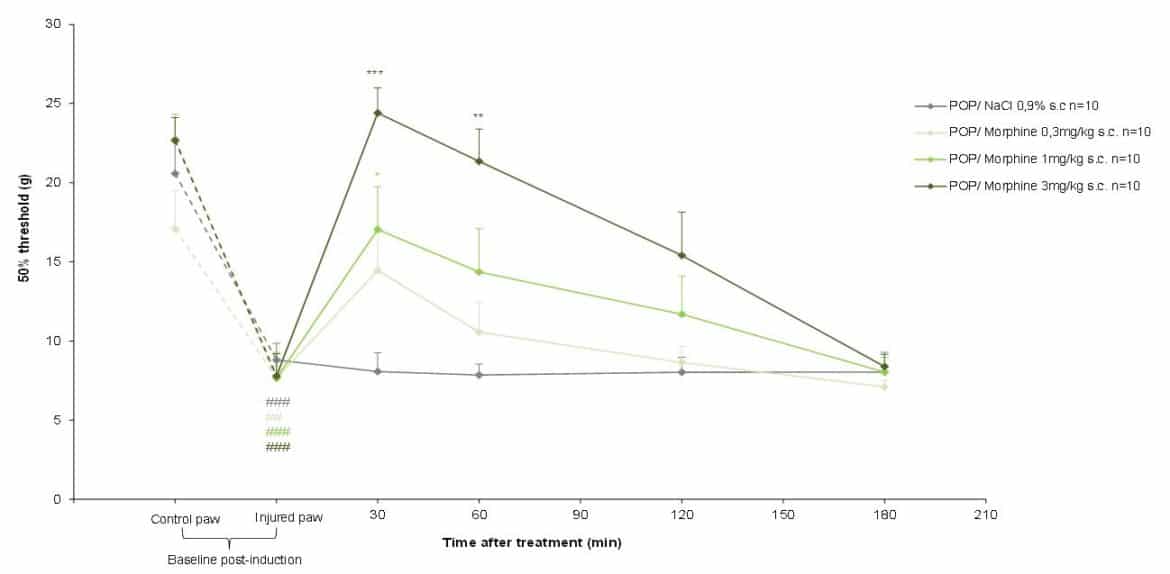
The incisional pain model allows assessment of the mechanisms of increased mechanical sensitivity following a surgical incision and is widely used for revealing the potency of new analgesics in a model of postoperative pain in conscious rats.
To know more about ANS Biotech capabilities, do not hesitate to contact us!
